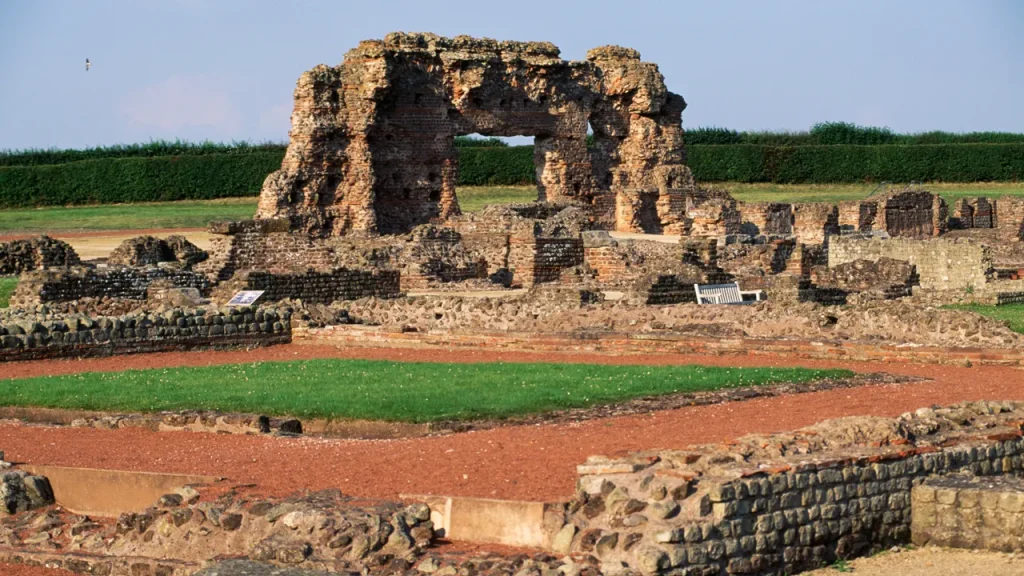Excavations at Wroxeter Roman City in Shropshire, England have revealed an ancient mosaic dating back to the early second century. The mosaic, which features dolphins and fish on colorful white, red, and blue tiles, is estimated to be around 2,000 years old. The city, established in the 90s AD, was once a thriving center the size of Pompeii, with over 200 houses, a civic bath house, a marketplace, and more. Despite the small number of remaining buildings, much of the city remains unexcavated, offering plenty of potential for further discoveries.
The collaborative effort among English Heritage, the University of Birmingham, Vianova Archaeology & Heritage Services, and Albion Archaeology involved thirty archaeologists in the excavations at Wroxeter Roman City. The initial goal was to locate a potential site for the city’s Civic Temple, but the uncovering of the ancient mosaic was a surprising and “rare” discovery. The artwork, which is believed to have been commissioned by a wealthy and important person shortly after the city’s establishment, has left archaeologists amazed.
In addition to the ancient mosaic, other artifacts such as coins and pottery fragments have also been found at the site. A large monumental building near the city’s main road was discovered, along with a possible shrine, adding to the historical significance of the area. The excavations have provided valuable insights into the city’s past and its inhabitants, shedding light on the daily life and cultural practices of the people who once lived there.
Despite being mostly unexcavated, Wroxeter Roman City continues to yield important archaeological finds that contribute to our understanding of Roman Britain. The recent discovery of the ancient mosaic further highlights the rich history and cultural significance of the site. The collaborative nature of the excavation project underscores the importance of teamwork and expertise in uncovering and preserving ancient artifacts for future generations.
As excavations continue at Wroxeter Roman City, there is optimism that more discoveries will be made, offering new insights into the city’s past and its inhabitants. The ancient mosaic, with its intricate design and vibrant colors, serves as a testament to the artistic skill and craftsmanship of the people who once lived in the area. The ongoing work at the site showcases the importance of archaeology in preserving and interpreting our shared heritage, ensuring that the stories of the past are not forgotten.
Overall, the recent excavations at Wroxeter Roman City have revealed a remarkable ancient mosaic dating back to the second century, shedding light on the city’s history and cultural significance. The collaborative efforts of archaeologists and experts have led to significant discoveries, such as the monumental building and shrine found near the main road. With much of the city still unexcavated, there is great potential for further finds that will enhance our understanding of the past and the people who once inhabited this thriving Roman city.


